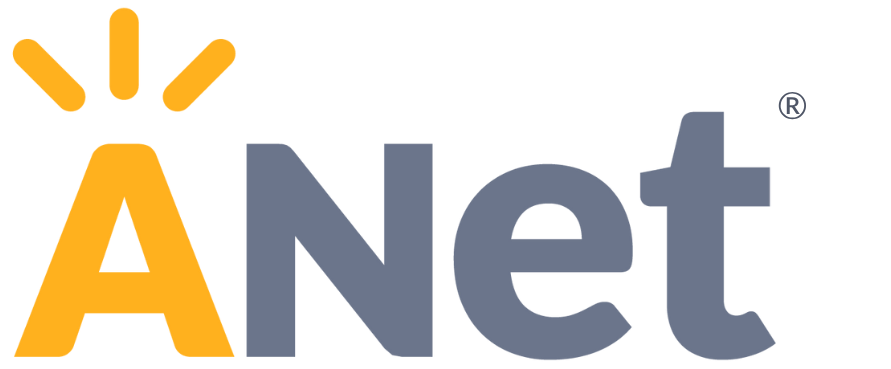Summary: The leaders at the Renaissance Charter School discuss their eight-year partnership with Achievement Network. Their efforts to implement interim assessments, prioritize standards, and increase the planning surrounding student work and assessment data have shown additional knowledge in their students' mastery of standards. We showcase their progress to where they are now.
 Step into the vibrant hallways of The Renaissance Charter School (TRCS) in Jackson Heights, where a diverse community of students from PreK-12 are immersed in a journey of rigorous learning. As one of the pioneering charter schools in New York City opened in 1993, TRCS is dedicated to developing leaders for the renaissance of New York, fostering powerful thinkers, engaged citizens, and lifelong learners. The holistic approach to education serves as the foundation for student progress.
Step into the vibrant hallways of The Renaissance Charter School (TRCS) in Jackson Heights, where a diverse community of students from PreK-12 are immersed in a journey of rigorous learning. As one of the pioneering charter schools in New York City opened in 1993, TRCS is dedicated to developing leaders for the renaissance of New York, fostering powerful thinkers, engaged citizens, and lifelong learners. The holistic approach to education serves as the foundation for student progress.
Executive Director and Principal Stacey Gauthier said it best when she quoted Dr. Monte Joffee, Chairperson and Founding Principal of The Renaissance Charter .png?width=199&height=239&name=accordion%20%26%20image%20alt%20content%20%20440%20x%20520%20(1).png) School, saying, “Success for this school means we have high-achieving students, but that we also provide a humanistic education.”
School, saying, “Success for this school means we have high-achieving students, but that we also provide a humanistic education.”
The Achievement Network and The Renaissance Charter School have worked alongside one another as partners for about eight years. Before ANet, TRCS struggled with how to truly identify learning gaps for kids. They would go about a school year without a crystal clear concept of student achievement until the state assessment and limited ways to intervene during the school year. The Renaissance Charter School’s partnership with ANet has helped the educators monitor and influence learning across the year.
“We didn’t have a roadmap to get us to what we wanted to see in terms of results with an interim assessment,” said Dan Fanelli, Assistant Executive Director and Assistant Principal of Middle School.
Through working with ANet Coach, Rashid Johnson, educators at the Renaissance Charter School .jpg?width=319&height=212&name=PCR12911%20copy%20(1).jpg) began to incorporate specific practices: leadership planning and PLC development, professional learning on assessment strategy and related tools, and classroom observation and feedback. These practices helped educators establish a foundation in the why and how of assessing their students. The educators at TRCS saw progress for student achievement by taking actions such as:
began to incorporate specific practices: leadership planning and PLC development, professional learning on assessment strategy and related tools, and classroom observation and feedback. These practices helped educators establish a foundation in the why and how of assessing their students. The educators at TRCS saw progress for student achievement by taking actions such as:
- taking a look at the scope and sequence across grade levels
- analyzing how their curriculum helps teach the standards they are focused on
- clear and coherent planning throughout the year
Assessments FOR Learning
The beginning of the partnership required TRCS educators to make a mindset shift and answer the question: why are we assessing our kids? Members of the school community were uncomfortable with what felt like more testing, and concerned about punitive measures or grades. Assessments felt like a new test being .jpg?width=313&height=208&name=PCR12925%20copy%20(1).jpg) implemented into their schedules. The educators at TRCS had to confront some internal bias around being a “data school” and adjust to a learner mindset. Their concerns are common, especially when we think about the assessment problem as a whole.
implemented into their schedules. The educators at TRCS had to confront some internal bias around being a “data school” and adjust to a learner mindset. Their concerns are common, especially when we think about the assessment problem as a whole.
“We did a lot of messaging at the beginning…ANet is really about the teachers understanding what your child knows and doesn’t know so they can change their approach,” said Executive Director and Principal Stacey Gauthier.
After the initial process of implementing interim assessments with teachers and students while building trust in the process, the TRCS leaders started to lesson plan alongside the ANet interim assessment schedule. Educational leaders work with their ANet coach to help determine their schedule of interim assessments and support the teaching and learning cycle throughout the year. Teachers are empowered and knowledgeable in the data they gain from the interim assessments, and can group students based on an understanding of a standard to be able to intervene or plan a lesson that uses each student’s unique learning style to grasp a standard.
With the ANet interim assessment schedule, TRCS leaders are able to map out when they’ll give an interim assessment, conduct a data meeting to analyze student progress, and name the focus standards for the year. At the beginning of the year, the leadership team and teachers of The Renaissance Charter School sit down and discuss the goals for the year, one of which is often what percentage of mastery they want to see on the major standards of the grade by the end of the year and map out the teaching plan from the first day of school to A1.
The team at TRCS, through their emphasis on assessment strategy and alignment, created an assessment and learning infrastructure that gives them the ability to analyze actionable insights to help students master the standards.
Data-Driven Instruction
Progress continued like a domino effect as the ANet and Renaissance Charter School partnership grew.
“It’s the same process, the same partnership, but the accomplishments are different every year,” said Dan Fanelli.
 After the strong assessment strategy and planning work, the data they were using from interims had TRCS educators realizing they needed a stronger plan of the scope and sequencing of the standards throughout the year and an understanding of which standards were being assessed when. The school leadership team collaborated with teachers across the school to create a roadmap of assessed standards so they could more efficiently map progress and monitor student outcomes through the data they collected in the interim assessments. Their roadmap and focus on the standards led to an analysis of the math and ELA curriculum to see if the curricular materials matched their scope and sequence plan and the standards they were assessing. Their emphasis on standards paired with their dedication to collaboration and transparency have made the conversation surrounding the standards commonplace.
After the strong assessment strategy and planning work, the data they were using from interims had TRCS educators realizing they needed a stronger plan of the scope and sequencing of the standards throughout the year and an understanding of which standards were being assessed when. The school leadership team collaborated with teachers across the school to create a roadmap of assessed standards so they could more efficiently map progress and monitor student outcomes through the data they collected in the interim assessments. Their roadmap and focus on the standards led to an analysis of the math and ELA curriculum to see if the curricular materials matched their scope and sequence plan and the standards they were assessing. Their emphasis on standards paired with their dedication to collaboration and transparency have made the conversation surrounding the standards commonplace.
The standards-based approach to learning is a cycle for teachers and leaders, creating intention and fidelity to their decisions and efforts. Trained in myANet, a resource tool that accompanies ANet interim assessments, TRCS teachers can enhance their knowledge and interventions of their students’ mastery of the standards.
“Magic only happens if you’re intentional, and now, we’re intentional,” said Gauthier.
Now, educators at TRCS feel they’re able to look at data on a standards level and see over time the mastery of a certain standard. They started picking priority standards three years ago and tracking mastery over time. All people in the building can talk about the standards, including the students. They know what standards they’re learning in class.
The work it took leaders to align standards, assessment, and curriculum took time, and has given educators stronger data and brought the greatest impact to the classrooms. With the emphasis on the standards and priority standards, they’re able to see results and progress in student learning. This is really where their work with ANet Coach Rashid Johnson comes in. Coach Rashid supports the educational leaders at TRCS to target specific skill development with educators to achieve a higher level of instructional rigor for students.
Building Instructional Leadership
Executive Director and Principal Stacey Gauthier says one of her frequent musings is that “it’s not about the students, it’s about the adults.” She leads TRCS with the understanding that the best way to empower students is to empower the teachers who are with them every day.
.jpg?width=291&height=194&name=PCR13058%20copy%20(2).jpg) This mindset influenced a big piece of where they are now with the leaders' work with Coach Rashid–how to be the best instructional leaders they can be. Eight years ago when TRCS began their partnership with ANet, they would complete teacher observations and walkthroughs and then give feedback to the teachers days later. Now, they’re able to provide real-time feedback, in-the-moment so teachers can shift their practice immediately.
This mindset influenced a big piece of where they are now with the leaders' work with Coach Rashid–how to be the best instructional leaders they can be. Eight years ago when TRCS began their partnership with ANet, they would complete teacher observations and walkthroughs and then give feedback to the teachers days later. Now, they’re able to provide real-time feedback, in-the-moment so teachers can shift their practice immediately.
“We doubled down on the things that worked and focused on how to make the good things better,” said ANet Coach Rashid Johnson.
The best way to define their efforts in instructional leadership is to work alongside. Rashid Johnson has helped the leadership team look at their standards and dial in on what to expect to see from the observations as evidence of the standard, what a high level of rigor looks like and how to get there. After they observed classrooms, they made sure to follow up and provide feedback for the teachers, making it a point to ensure teachers knew the visit and feedback intended to build them up, not tear them down. The work to bring non-evaluative real-time feedback to teachers took additional relationship building and trust between the educators, and Coach Johnson has helped shift the mindset in teachers and leaders to see the observations piece as an asset.
OUR PARTNERSHIP CONTINUES
The Achievement Network and The Renaissance Charter School continue to work together to grow and.jpg?width=293&height=195&name=PCR12975%20copy%20(3).jpg) learn so we can achieve the best possible outcomes for their students. As student needs continue to evolve, Executive Director and Principal Stacey Gauthier summed it up best when she said this about a partnership with ANet.
learn so we can achieve the best possible outcomes for their students. As student needs continue to evolve, Executive Director and Principal Stacey Gauthier summed it up best when she said this about a partnership with ANet.
“[ANet is] a partnership, it’s professional development, it’s ongoing reflection of what’s working and what’s not working, it’s a lot of honest conversations,” said Gauthier.
This blog is part of Assessment Week 2024. View our other Assessment Week resources:
